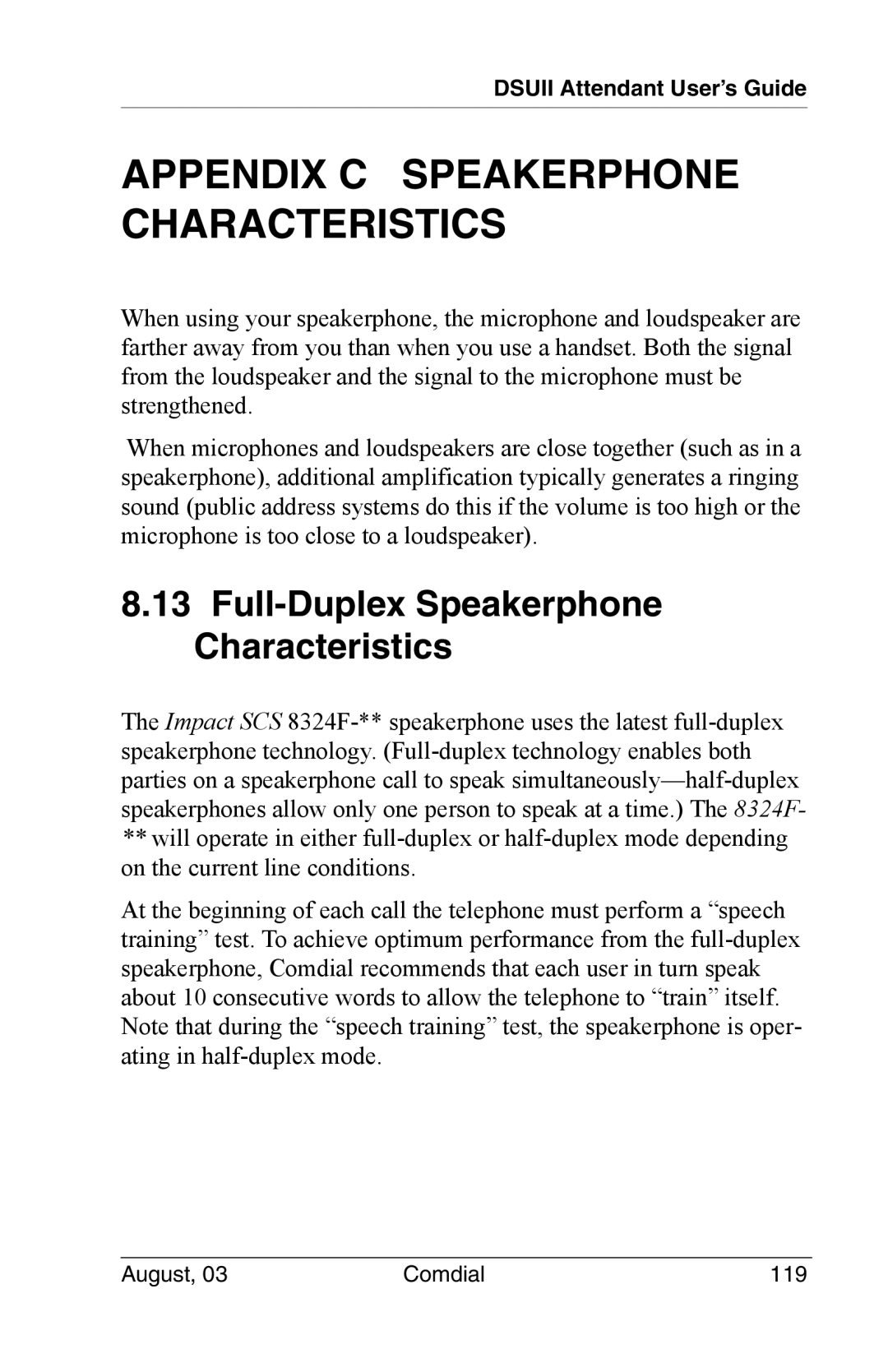
DSUII Attendant User’s Guide
APPENDIX C SPEAKERPHONE CHARACTERISTICS
When using your speakerphone, the microphone and loudspeaker are farther away from you than when you use a handset. Both the signal from the loudspeaker and the signal to the microphone must be strengthened.
When microphones and loudspeakers are close together (such as in a speakerphone), additional amplification typically generates a ringing sound (public address systems do this if the volume is too high or the microphone is too close to a loudspeaker).
8.13Full-Duplex Speakerphone Characteristics
The Impact SCS
**will operate in either
At the beginning of each call the telephone must perform a “speech training” test. To achieve optimum performance from the
August, 03 | Comdial | 119 |
